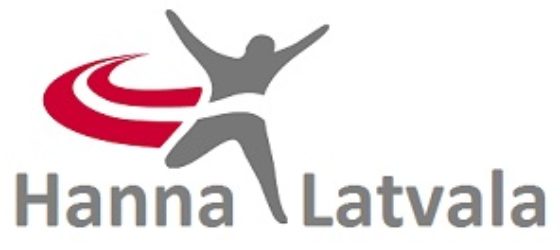The high-priority Vision 2030 blueprint aims to build economic diversity and oil revenue reduction while Saudi Arabia boasts exceptional advancements toward digital transformation. The public and private sectors depend on cloud technology implementation to turn their transformations into reality. The saudi arabia cloud summit unites technology professionals with business executives as well as legislators and innovators to hasten cloud computing development in their region. Professionals with an interest in Middle Eastern technology will find that comprehending the subtleties of this summit offers important insights into the Kingdom’s digital future and the prospects it offers for technical cooperation and advancement.
1. Strategic Alignment with Saudi Vision 2030
The Saudi Arabia Cloud Summit works directly with Vision 2030 goals to accelerate digital transformation efforts in both government organizations and private enterprises. Diversification of Saudi Arabia’s economy represents the main goal behind this strategic initiative to reduce oil dependence and to push forward essential public service development such as infrastructure infrastructure and healthcare services and tourism activities and educational services. The foundation of Saudi Arabia’s national transformation rests on cloud technologies since these components enable digital services to work along with data-driven decision making. Virtual meetings during the summit will help stakeholders develop technology investments that reach national economic targets when cloud adoption plans match national agendas. The platform facilitates successive adoption of digital Vision 2030 initiatives by combining technology experts with policy administrators through an informational event.
2. Regional Data Sovereignty and Compliance Frameworks
Navigating the intricate web of data sovereignty regulations unique to Saudi Arabia and the larger Middle East is one of the summit’s main priorities. Participants acquire crucial knowledge about the Kingdom’s developing regulatory environment, which includes the Cloud Computing Regulatory Framework (CCRF), the Personal Data Protection Law (PDPL), and other compliance standards set by the Communications and Information Technology Commission (CITC). These rules have a big influence on how businesses can handle, store, and move data both inside and beyond the Kingdom. The summit offers guidance on how to deploy cloud technologies that satisfy these exacting standards while fostering innovation. For businesses operating in Saudi Arabia that need to strike a balance between regulatory compliance and technical innovation, this information is crucial.
3. Public-Private Partnership Opportunities
The establishment of strategic alliances between public and private sector technology companies is accelerated by the Saudi Arabia Cloud Summit. The development of the strong cloud infrastructure needed to serve the Kingdom’s digital aspirations depends on these partnerships. While business sector participants propose solutions that cater to these particular demands, government officials highlight priority areas for technical growth throughout the summit. Formal agreements, joint ventures, and innovative collaborations that speed up digital projects are frequently the result of these exchanges. Dedicated matchmaking sessions, roundtable talks, and cooperative seminars centered on certain industries like healthcare, education, and smart city development are just a few of the organized networking opportunities offered by the summit that are intended to help people make these connections.
4. Localization Requirements and Investment Landscape
Gaining an understanding of Saudi Arabia’s localization regulations is essential to breaking into its expanding cloud industry. The Kingdom’s localization requirements, which demand that some cloud service components be supplied through local data centers and operations, are thoroughly covered at the summit. The CITC’s cloud service provider categorization system, which groups providers according to their degree of investment and local presence, is discussed in the presentations. Participants gain knowledge about investment incentives provided by the Saudi Arabian General Investment Authority (SAGIA) and MCIT’s Tech Champions programs. These meetings go over the practical and financial aspects of starting or growing cloud businesses in the Kingdom, such as licensing requirements, cooperation arrangements, and accessible economic zones with specific technological incentives.
5. Cybersecurity Standards and Implementation Frameworks
A non-negotiable pillar of Saudi Arabia’s cloud computing environment is strong cybersecurity. The National Cybersecurity Authority (NCA) standards, implementation frameworks, and certification criteria for cloud services operating in the Kingdom are covered in special tracks during the summit. The Essential Cybersecurity Controls (ECC), Critical Systems Cybersecurity Controls (CSCC), and cloud-specific security frameworks required for various industries are covered in sessions along with practical implementation strategies. Experts in cybersecurity exchange tactics for identifying threats, responding to incidents, and designing security architectures that meet Saudi standards while preserving operational effectiveness. The summit helps firms create compliance plans that suit Saudi Arabia’s particular security needs without reiterating work across several frameworks by offering important background on how these standards differ from international frameworks like NIST or ISO.
6. Specialized Sector Transformation Initiatives
Specialized cloud deployment tactics catered to important economic sectors going through digital transformation are highlighted at the Saudi Arabia Cloud Summit. Cloud-based electronic health record systems and Saudi Health Information Exchange (SHIE) criteria are examined in healthcare sessions. Education tracks look at virtual classroom structures and the National eLearning Center’s projects. Presentations on financial services include the rules set out by the Saudi Central Bank (SAMA) on digital payment systems and cloud-based financial technology. Every industry-specific program offers in-depth knowledge of the particular difficulties, legal requirements, and implementation schedules that are pertinent to that area. Because they provide useful advice on cloud adoption that takes into account sector-specific regulatory frameworks, data sensitivity concerns, and integration requirements with current national systems, these specialized sessions are especially beneficial for organizations operating in these priority sectors.
7. Emerging Technology Integration and Innovation Showcases
The conference looks at how Saudi Arabia’s digital ecosystem is incorporating emergent technologies in addition to fundamental cloud infrastructure. Sessions look at real-world uses of blockchain, IoT, AI, and machine learning in cloud settings that cater to particular use cases in Saudi Arabia. The innovation showcases demonstrate effective implementations across established companies and startup firms whereas innovation challenges initiated by the government bring authentic technical solutions to practical problems. The discussions present actual applications of advanced technology which Saudi Arabia utilizes to resolve its specialized challenges including religious tourism management, water preservation, desert farming methods and intelligent urban planning. Technology adaptation methods that work well with Saudi Arabia’s special environmental factors and cultural realities and economic dynamics receive information exchange through the summit platform.
Conclusion
The Saudi Arabia cloud technology event serves as a strategic hub where national policy, economic growth, technical innovation, and regulatory frameworks come together, making it much more than just a technology conference. The insights gathered from this conference offer crucial context for navigating this intricate yet incredibly attractive market for companies looking to take part in Saudi Arabia’s digital revolution. Engaging with the Kingdom’s technological ecosystem more effectively is made possible by an understanding of how Vision 2030 goals, legal requirements, sector-specific priorities, and talent development efforts interact.




